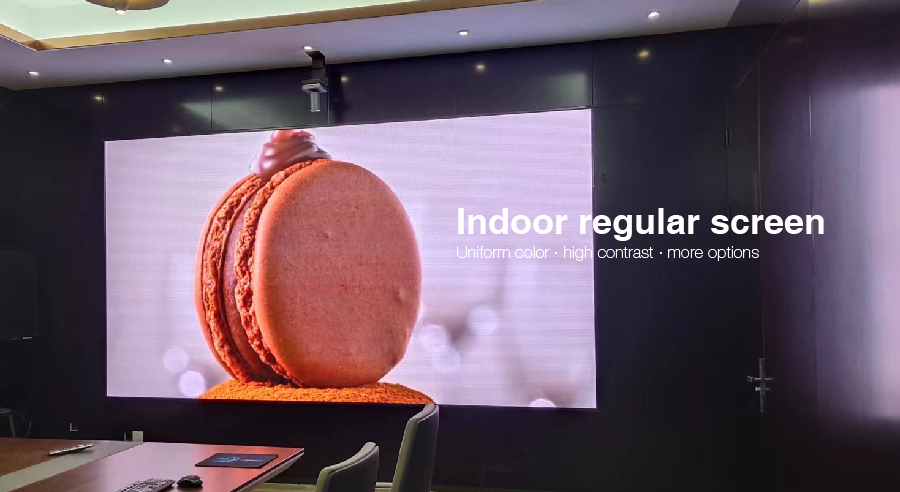No products in the cart.
Industry news
Discussion on the Solution of Long Life LED Display Screen.
Recently, LED display screens have become increasingly widely used, with beautiful and colorful displays. However, in practice, we often see some LED display screens that, in just six months or after a rainy season, initially beautiful images no longer reproduce, such as color distortion, dead lights, large flower screens, etc. Professional technical personnel know that this must be due to device failure or corrosion leading to poor contact. In the field of advertising, LED screens are a relatively expensive electronic product, often costing hundreds of thousands, some even hundreds to tens of millions. So, how to ensure the lifespan of such a huge investment in equipment, whether to maintain good display performance and low failure rate during its lifespan, has become a topic of great concern for manufacturers and investors. From a technical perspective, let’s analyze the factors that affect the lifespan of LED displays and explore measures to ensure their longevity.
1. Factors affecting the lifespan of LED display screens
The factors that affect the lifespan of LED display screens are classified according to internal and external factors, including the performance of LED light-emitting devices, peripheral component performance, and product fatigue resistance; External factors include the working environment of LED display screens, etc.
1.1 Impact of LED light-emitting device performance
LED light-emitting devices are the most critical and lifespan related components of display screens. For LEDs, we focus on the following indicators: attenuation characteristics, waterproof vapor permeability characteristics, and UV resistance performance.
Luminance attenuation is an inherent characteristic of LEDs. For a display screen with a design lifespan of 5 years, if the brightness attenuation of the LED used is 50% after 5 years, it is necessary to consider reserving attenuation margin during design, otherwise the display performance cannot meet the standard after 5 years; The stability of the attenuation index is also important. If the attenuation has exceeded 50% by 3 years, it means that the lifespan of this screen has ended prematurely.
Display screens used outdoors are often corroded by moisture in the air, and LED light-emitting chips can cause stress changes or electrochemical reactions in contact with water vapor, leading to device failure. Under normal circumstances, LED light-emitting chips are wrapped in epoxy resin and are not corroded. Some LED devices with design defects or material and process defects have poor sealing performance, and water vapor is easily entering the interior of the device through pin gaps or gaps between the epoxy resin and the shell interface, leading to rapid device failure, known as “dead lights” in the industry.
Under the irradiation of ultraviolet light, the properties of the colloid and support material of LED will change, leading to device cracking and affecting the lifespan of LED. So the UV resistance of LED used outdoors is also one of the important indicators.
Improving the performance of LED devices requires a process and market testing. Currently, Japan and some Taiwanese companies are very cautious and do not promise SMD outdoor waterproofing. However, some domestic manufacturers are eager to launch new products to occupy the market and blindly promise excellent outdoor performance despite failing the evaluation. In the application of SMD5050 for outdoor display screens, multiple manufacturers have experienced a large number of quality accidents, some of which have caused losses of tens of millions of yuan, which is shocking.
1.2 Impact of peripheral components
In addition to LED light emitting devices, the display screen also uses many other peripheral components, including circuit boards, plastic shells, switch power supplies, connectors, chassis, etc. Any component failure may lead to a decrease in the lifespan of the display screen. So, it is not an exaggeration to say that the longest lifespan of a display screen is determined by the lifespan of the key component with the shortest lifespan. For example, LED, switch power supply, and metal casing are all selected according to the 8-year standard, while the protective process performance of the circuit board can only support its operation for 2 years. After 2 years, damage may occur due to corrosion, so we can only obtain a 2-year lifespan display screen.
1.3 Impact of product fatigue resistance performance
The fatigue resistance of display screen products depends on the production process. The fatigue resistance of the module produced by the poor three prevention treatment process is difficult to guarantee. When the temperature and humidity change, cracks will appear on the protective surface of the circuit board, leading to a decrease in protective performance.
So the production process is also a key factor determining the lifespan of the display screen. The production processes involved in the production of display screens include: component storage and pre-treatment process, furnace welding process, three prevention treatment process, waterproof sealing process, etc. The effectiveness of the process is related to material selection and proportion, parameter control, and operator quality. Accumulation of experience is crucial, so a factory with years of experience will be more effective in controlling the production process.
1.4 Impact of Work Environment
Due to different uses, the working conditions of the display screen vary greatly. From an environmental perspective, the indoor temperature difference is small, without the influence of rain, snow, and ultraviolet radiation; The maximum temperature difference outdoors can reach 70 degrees, plus wind, sun, and rain. The harsh environment can exacerbate the aging of the display screen, and the working environment is an important factor affecting the lifespan of the display screen.
